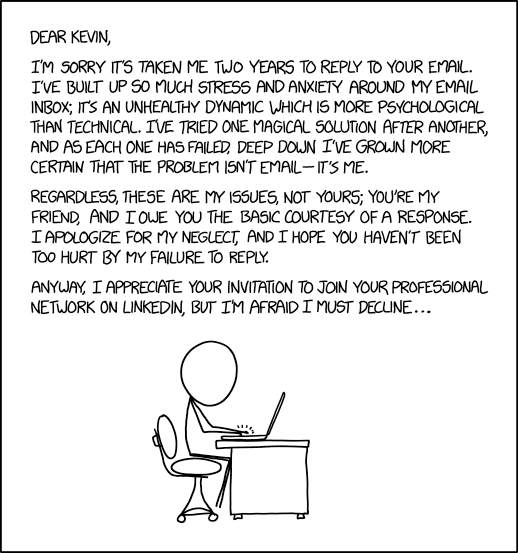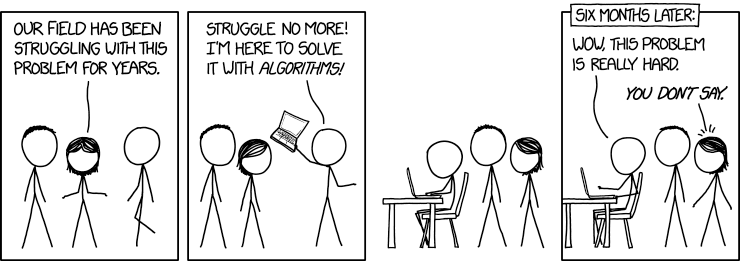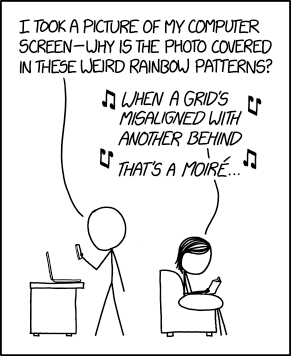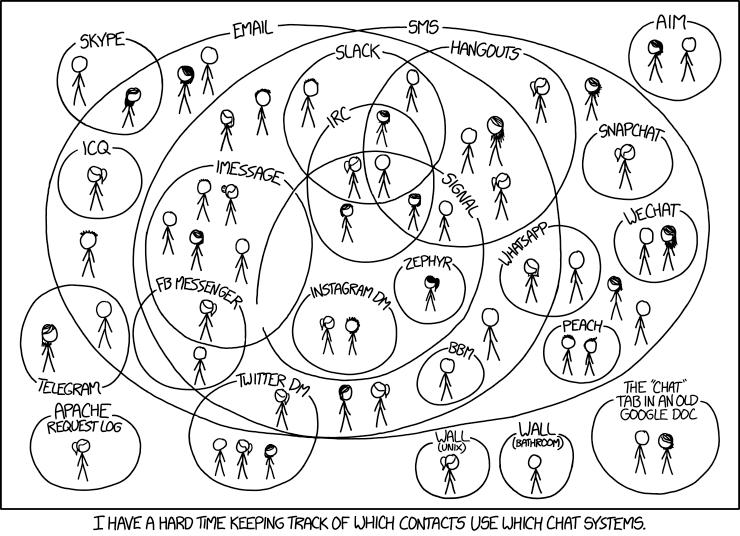Shared posts
"Peace Pig": Me, Neo-Nazis (1961), the U of I Anarchist (1970), and Street-Fighters Right and Left (2017)
ATSB releases satellite imagery analysis in the search for MH370

The ATSB has released two reports which analyse data gathered during the surface search for Malaysia Airlines flight MH370.
The Australian Transport Safety Bureau (ATSB), released two reports, prepared by Geoscience Australia and the Commonwealth Scientific and Industrial Research Organisation (CSIRO), that provide analysis and findings relating to satellite imagery taken on 23 March 2014, two weeks after the disappearance of MH370, over the southern Indian Ocean.
The satellite imagery was acquired through the assistance of French authorities. The images were captured by satellite two weeks after the aircraft went missing on 8 March 2014. The area covered by the imagery was not one that was searched from the air at that time, but is close to the underwater search area.
Experts from Geoscience Australia examined four images to determine whether they contained objects that were potentially man-made in origin. Given the proximity to the defined underwater search area, the CSIRO conducted a drift study to determine the geographic origin of the objects identified in the satellite images to provide an indication of where they were likely to have been on 8 March 2014.
The drift study found that the projected location on 8 March of the objects identified in most of the satellite images was consistent with the area identified by experts during the MH370 First Principles Review in November 2016.
While the objects have not been definitely identified as MH370 debris, the study may be useful in informing any further search effort that may be mounted in the future.
More information:
The post ATSB releases satellite imagery analysis in the search for MH370 appeared first on ASN News.
Waymo fleshes out self-driving car tech with hardware that goes soft at first sign of trouble
Shriveling vehicle patented
Waymo has been granted a patent to deck out its self-driving cars in a material that becomes less rigid when its sensors detect a high chance of collision.…
Table the Label
Lately I’ve been feeling like progressives have become so entrenched in their own conceptual frameworks that we’re splitting hairs and engaging in name-calling instead of constructively addressing the big picture. This is not to say we can’t disagree; but the abuse of the confusing term “neoliberal” is not helping, considering very few liberals actually subscribe to market fundamentalism. And it’s complicated: Austerity, for example, is a neoliberal economic approach that was (thankfully) not embraced by the Obama administration. It should go without saying that the term “neoliberal” has nothing to do with political “liberalism” – but sadly it does seem to need saying.
On a similar note, I use the term “socialist” in this cartoon because I see it thrown around a lot, but Scandinavian countries don’t actually have socialist economies; “social democracy” is a more accurate way to describe those governments.
This earlier blog post has more thoughts on how we’re prone to labeling ourselves in unhelpful ways.
you mean a baker
The Worst Things For Sale is Drew's blog. It updates every day. Subscribe to the Worst Things For Sale RSS!
lets aggregate content
The Worst Things For Sale is Drew's blog. It updates every day. Subscribe to the Worst Things For Sale RSS!
Can’t remember what you did all day, but you’re exhausted.







The post Can’t remember what you did all day, but you’re exhausted. appeared first on Indexed.
flammable vs inflammable
The Worst Things For Sale is Drew's blog. It updates every day. Subscribe to the Worst Things For Sale RSS!
President Trump's Budget Plan Weakens U.S. Weather Prediction
And strangely, the proposed budget directly contradicts the Weather Research and Forecasting Innovation Act just passed by the Republican-dominated Congress and SIGNED by President Trump.
Let me review some of the recommendations of the NOAA budget plan---you will not believe them.
1. "NOAA requests a reduction of $5,000,000 to slow the transition of advanced modeling research into operations for improved warnings and forecasts. "
The U.S. is behind in numerical weather prediction and Congress had provided funding to replace the aged GFS with a Next Generation Global Prediction System (NGGPS) and other major improvements. A five million dollar reduction will cripple the National Weather Service's ability to build the new modeling system and will also undermine improvements in hurricane forecasts.
2. "Terminate Investment in Mid-Range Weather Outlooks: NOAA requests a decrease of $5,000,000 to terminate all development, testing, and implementation of experimental products to extend operational weather outlooks, including temperature and precipitation outlooks, from 16 days to 30 days."
Perhaps one of the areas of greatest potential in weather prediction is extended skill into the subseasonal domain (2 weeks to a month). Subseasonal prediction was the CENTERPIECE of the Weather Research and Forecasting Innovation Act noted above (which was pushed and supported by Republicans in Congress).
And now Trump's folks want to zero it out. Just wacky.
3. "NOAA requests a decrease of $11,000,000 to reduce or eliminate components of its Tsunami Research and Operational Warning program. ..Support for preparedness education, outreach, and innovation research will cease. This program change request is consistent with the elimination of the DART® moorings"
There is great concern about loss of life associated with tsunamis, particularly after hundreds of thousands of people died in the Indian Ocean event of 2004. The West Coast of the U.S. is particularly vulnerable. A key resource for tsunami prediction is the DART buoy system (see above), which can sense anomalous increases in water level. Stunningly, the Trump plan would eliminate these buoys (which we have already invested in), putting American and other lives at risk. Madness.
4. "Reduce Surface and Marine Observations: NOAA will reduce surface and marine observations by $25,989,000, including the National Mesonet Program, Weather and Ocean Platform, and the Tropical Atmosphere Ocean (TAO) array. It also will reduce marine observations that inform forecasts and warnings as well as understanding of global environmental patterns, such as El Niño."
Talk about going blind. This approach will savage the nation's observation system (such as the high density mesonet program) and end the buoy array over the Pacific, which helps us diagnose and predict El Nino and La Nina.
5. "Eliminate Arctic Research: NOAA requests decreases of $2,230,000 from Climate Laboratories and Cooperative Institutes and $3,770,000 from Regional Climate Data and Information. This reduction will terminate Arctic research focused on improvements to sea ice modeling and predictions that support the safety of fishermen, commercial shippers, cruise ships, and local communities."
One of the key deficiencies for weather and seasonal forecasting is poor understanding of changes in sea ice distribution and how to forecast them. Trump's budget proposed to terminate all research in this area. Unbelievable
There is much we don't know about the origins and prediction of tornadoes and field programs like Vortex provide critical insights. But Trump's folks want to terminate this important research program, which is surprising since tornadoes impact many red states.
_____________
These are only a few of the outrageous, irrational cuts listed in the Trump NOAA budget plan. The result of these and other cutbacks would be to set back U.S. weather prediction several years, giving up any chance of advancing our nation's weather prediction capabilities to state-of-the-science.
The economic impact of poorer weather predictions would be large and negative. Bizarrely, this budget plan directly works against the recently passed Weather Research and Forecasting Innovation Act, that was pushed by Republican leadership in Congress and signed by President Trump.
How can a President pushing to " Make American Great, Again" propose a budget that will "Make America's Weather Prediction Inferior, Again"?
Republican staffers in Congress have told me that Trump's budget is dead on arrival and that they will act to protect the nation's weather prediction capabilities. Since the worst weather in the nation (e.g., tornadoes, hurricanes, severe thunderstorms) is found in red states, you would expect the Republicans to take weather forecasting seriously. Most do.
And perhaps there is a silver lining to this situation. Might Trump's crazy budget inspire moderate Republicans and Democrats to work together to put together a rational budget plan for NOAA and other agencies? One could hope.
whoa vs woah
The Worst Things For Sale is Drew's blog. It updates every day. Subscribe to the Worst Things For Sale RSS!
ASN releases drone near-miss database
The Aviation Safety Network today released the ASN Drone Database, containing over 2800 reports of unmanned aircraft (UAS) sightings from pilots and airprox occurrences involving UAS and aircraft. The types of UAS covered include consumer and professional helicopter type drones, larger military fixed wing (reconnaissance) drones, and model aircraft.
Most of the data has been sourced from official government agencies, like the U.S. FAA, Transport Canada, and the UK Airprox Board. The data has been structured and enriched so it can be easily filtered by among others aircraft type involved, altitude, estimated separation distance.
The database includes eight cases of suspected and confirmed UAS collisions with aircraft and 73 cases in which an evasive manoeuvre had to be carried out by a pilot to avoid colliding with a drone.
The database is available for download as .CSV (spreadsheet) and .PDF (document) files.
The post ASN releases drone near-miss database appeared first on ASN News.
all my open browser tabs
The Worst Things For Sale is Drew's blog. It updates every day. Subscribe to the Worst Things For Sale RSS!
the value of a dollar
The Worst Things For Sale is Drew's blog. It updates every day. Subscribe to the Worst Things For Sale RSS!
MH370 most likely in new search area says new ocean drift analysis
A new report released by the Australian CSIRO further confirms the most likely location of the missing flight MH370 is in the new search area identified by a review conducted in November 2016.
Even though the active underwater search for Malaysia Airlines flight MH370 has stopped, researchers continue to pinpoint the most likely area where the Boeing 777 went down. The new report published by the Commonwealth Scientific and Industrial Research Organisation (CSIRO) features data and analysis from ocean testing of an actual Boeing 777 flaperon.
This added an extra level of assurance to the findings from earlier drift modelling research, which was conducted using replicas of the a flaperon found on La Reunion Island.
An actual B777 flaperon was sourced and cut down to match photographs of MH370’s flaperon, and then testing was done in the waters near Hobart.
Knowledge of how the flaperon, and the other parts of MH370 that have been found, respond to wind and waves were combined with the currents of the Indian Ocean.
CSIRO combined both in a model to simulate the drift across the ocean, to be able to compare the results with observations of where debris was and wasn’t found, in order to deduce the location of the aircraft.
The new report’s findings support the conclusions of the first report. It indicates that the most likely location of MH370 is in the new search area identified and recommended by the First Principles Review report, and most likely at the southern end of that, near 35 degrees South.
“We cannot be absolutely certain, but that is where all the evidence we have points us, and this new work leaves us more confident in our findings,” CSIRO states.
More information:
The post MH370 most likely in new search area says new ocean drift analysis appeared first on ASN News.
112 years old
The Worst Things For Sale is Drew's blog. It updates every day. Subscribe to the Worst Things For Sale RSS!
“Government” or “Democracy”?
This cartoon came about from the recent realization that an obnoxiously libertarian internet entrepreneur/huckster used to live in my neighborhood. You know, one of those “government needs to get out of the way of innovation” bros who don’t perhaps fully appreciate the origins of the internet as a government program, or all the other scientific research that has been government-funded. I’m so sick of these people.
UPDATE: For more, see this blog post responding to reader comments.
Might Bipartisan Actions Revolutionize U.S. Weather Prediction?
And the effort could be completely bipartisan. It would also provide an example of how both sides of the aisle can work together to make major improvements in a key national capability--weather prediction-- saving lives, protecting property, and substantially enhancing the economic vitality of the U.S.
There are two bipartisan bills before Congress right now that are worthy of support:
1. The Weather Research and Forecasting Innovation Act of 2017: H.R. 353 sponsored by Rep. Frank Lucas (R OK), Suzanne Bonamici (D OR), Lamar Smith ( TX), and others. And its carbon-copy version in the Senate.
2. Radar Gap Study Act. Text is here. Sponsored by Senator Maria Cantwell (D WA), Senator Richard Burr and Tom Tillis (R NC). Representative Robert Pittenger (R-NC) introduced companion legislation in the House of Representatives.
The Weather Research and Forecasting Innovation Act is extraordinarily forward leaning. Its goal is to:
To improve the National Oceanic and Atmospheric Administration’s weather research through a focused program of investment on affordable and attainable advances in observational, computing, and modeling capabilities to support substantial improvement in weather forecasting and prediction of high impact weather events, to expand commercial opportunities for the provision of weather data, and for other purposes.
The specifics of the bill are enough to warm the heart of any American concerned about the quality and future U.S. weather prediction, including:
1. Organization of a coherent research program for improving U.S. weather science and prediction, including extramural (outside of the U.S. government) research.
2. Develop rational methods for designing and supporting the U.S. weather observation system (amazingly this had really not been done).
3. Organized efforts to improve U.S. tornado, hurricane, and subseasonal (less than a few months) forecasting.
4. Requirement that the US Air Force explain their problematic selection of a non-U.S. weather modeling system for their operational requirements (big mistake by the way)
5. Calls for the evaluation of more private sector weather observation assets.
6. Annual reviews of the computer resources available for U.S. weather prediction.
..and much more. The bill includes the financial resources needed for the above.
Basically Congress is telling the NOAA/National Weather Service that is expect U.S. should be state-of-the-science and that the time for excuses are over. Some in NOAA might be discomfited that Congress is providing a lot of guidance about what needs to be done. But quite frankly, progress has been too slow and it is going to take Congress to move the U.S. weather prediction effort into higher gear.
The radar act sponsored by Senator Cantwell and her Republican colleagues from North Carolina?
It directs the National Weather Service (NWS) to determine which areas of the country have inadequate weather radar and develop a plan to improve radar coverage. And there are major gaps in the radar coverage such the coastal zone west of Oregon, the eastern slopes of the Cascades, and much of eastern Oregon. The National Weather Service radar coverage below 4, 6, and 10K feet ABOVE GROUND LEVEL (shown below for country and the NW) shows major gaps in the west, but the situation is MUCH worse than presented here. Many of the radars start out high and thus the radar beams can miss the critical lower atmosphere. Radar coverage is very much needed along the eastern slopes of the Cascades for wildfire management and localized flash flood prediction.
And yes, weather prediction (ranging from hourly to seasonal prediction) is not climate prediction, so it lacks the controversy of decadal to century-long forecast of greenhouse gas impacts. So the current administration can support it.
The Pinnacle – 1957 Lancia Flaminia
you still cant microwave
The Worst Things For Sale is Drew's blog. It updates every day. Subscribe to the Worst Things For Sale RSS!
Theme : Simca – An Introduction
BaT Auction: 1990 Lancia Delta HF Integrale 8V
Joe ElliottThis is tempting.
This 1990 Lancia Delta HF Integrale shows 98,291 total kilometers (~61k miles) and remained with its original owner until recently acquired by the selling dealer. Powered by a turbocharged 8-valve 2.0 liter inline-four mated to a 5-speed manual transmission, this example has been modified with a Garrett T4 turbocharger, FC Performance MAF tuning, high discharge coil, Splitfire super shot controller, Sytec manual boost controller, Samco hoses, a cone air filter and heat shield, and a Supersprint exhaust. Additionally, the suspension and interior have been modified as detailed below. Servicing included a new timing belt and clutch at 94k kilometers, while an oil change was just performed and new spark plugs were added. This Lancia is now offered with receipts and records since 1991 as well as a clean Washington title.

The seller states that the longtime original owner set this car up for occasional track and autocross use. The rear spoiler has been removed for a cleaner look, while the body and paint are described to be free of dings or scratches. Rolling stock consists of period-correct 15″ Wedsport alloys that show a few marks in these pictures and are wrapped in Michelin Pilot tires.

The modified suspension utilizes Bilstein coilovers with H&R springs at all four corners. A front strut tower bar and OMP rear strut bar have also been fitted to tighten things up. A Supersprint exhaust system with dual tips reportedly sounds great and retains a catalytic converter for emissions compliance.

Inside, bolstered AAR buckets have been installed with a cloth seat for the driver and a leather version for the passenger. The door panels are said to still be wrapped in the factory plastic.

The interior has been modified with a lap timer on the dashboard with the transponder also included. A Martini-themed MOMO steering wheel looks at home in the motorsport-inspired cabin, while a Tomei AFR gauge, carbon fiber shift surround/knob, and Sparco pedals round out the theme. The odometer shows 98,291 kilometers and is backed up with records since 1991.

The turbocharged 2.0 liter inline-four is mated to a 5-speed manual transmission and has been fitted with a Garrett T4 turbocharger, FC Performance MAF tuning, high discharge coil, Splitfire super shot controller, Sytec manual boost controller, Samco hoses, and a cone air filter with a heat shield. The timing belt and clutch were reportedly replaced at 94k kilometers, while the engine oil and spark plugs were just changed prior to this auction.

Several pictures of the undercarriage and wheel wells are included in the photo gallery below.























